Contents
About twenty years ago, those who wanted to eat blackberries had to go to the forest, look for picturesque wild bushes and, carefully, so as not to injure their hands on thorns, pick soft juicy berries. And today there are more than 400 varieties of this wonderful culture with very useful fruits that can be grown without much difficulty in your country house. Black Satin Blackberry is a useful sweet berry with a delicate sourness, growing on a very beautiful thornless bush with luxurious shoots. Bushes of this variety do not require special care and can grow throughout the country.
Variety description
Variety “Black Satin” is famous for fast-growing bushes and berries of dessert taste. Ornamental bushes can serve as an excellent decoration of the site: young shoots without thorns are green in color, and as they grow, they become hard dark brown, they look very elegant rather dense, collected in three bright green leaves. Delicate, slightly purple flowers appear in late May or even June, by the end of flowering they become simply white. During the day, the shoots of this variety grow up to 7 cm, an adult bush can reach 5–7 m, and up to one and a half meters the branches grow vertically, and then go horizontally, like creeping plants.
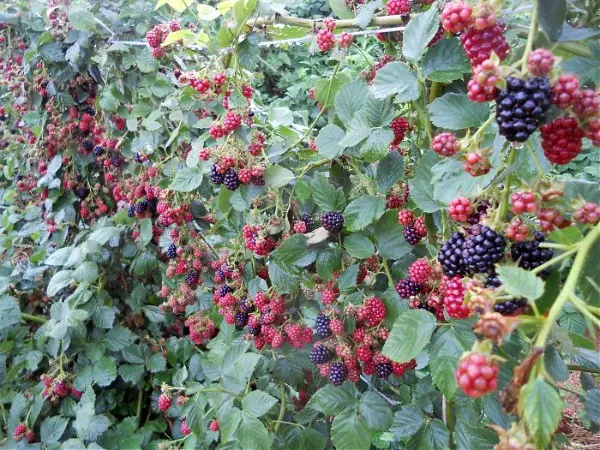
Fruiting begins in the second year, an adult bush of this variety gives a yield of 20 kg with good care. The berries are slightly elongated, ripening, acquire a black color and a glossy sheen, they are collected in a brush of 10-15 pieces. Their average weight is 4 g, and on the tops of the branches there are even fruits of 7 or even 10 g each.
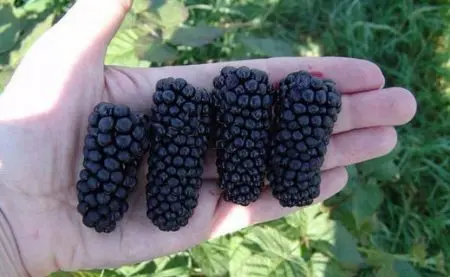
Berries of the Black Satin variety are not only tasty, but very useful – sugar, vitamins and microelements form a ratio that is very beneficial for human health. They have a beneficial effect on the composition of the blood, improve the general condition and strengthen the immune system. One vitamin C contains 4 times more than oranges. It is best to eat them fresh, but they are suitable for preparations and making delicious desserts. The calorie content of fresh berries is half that of frozen ones – during processing, whether it be freezing or boiling, they form more carbohydrates.
Advantages and disadvantages
The variety “Black Satin” is becoming more and more popular every year. This is easily explained by the decorativeness of the bush and the exquisite taste of the berries. If you let it bear fruit as you want, then the berries will appear in the second year after planting, and the maximum yield will begin from the 3rd or 4th year.
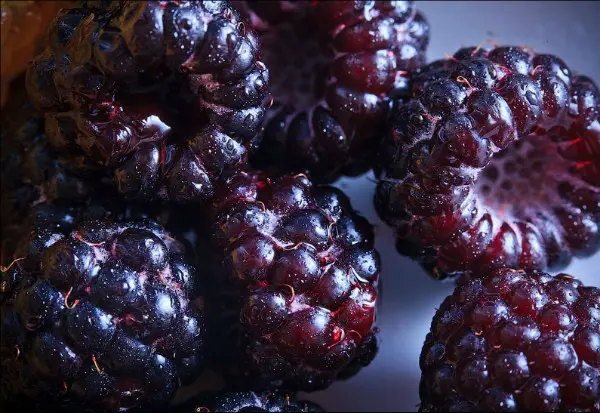
All descriptions focus on the absence of root growth, that is, the bush does not have to constantly thin out, fight thickening, which makes it very easy to care for it. Common blackberry diseases bypass this variety, only gray rot is worth fearing.
But with so many advantages, there are also disadvantages. The disadvantage of this variety is the prolonged ripening of the crop. On one branch, even in one brush, there may be unripe, almost completely green fruits and opening flowers next to ripe black berries. And the berries, which are very juicy at the time of ripeness, must be immediately picked, otherwise the plant is threatened with rot, and overripe berries will lose their taste and some of their useful qualities. Such a long stretched fruit ripening makes this variety inconvenient for industrial cultivation. But the same lack of variety turns out to be a boon for a family living in a dacha – from mid-June to the end of September, you can eat fresh berries every 2-3 days, which are not in vain called the “Mendeleev’s table”. Moreover, berries can be stored without processing for only a couple of days.

A really serious drawback of a variety that is excellent in all respects is the poor winter hardiness of the bushes. They must be covered for the winter, because not so much the roots as the above-ground part of the bush can freeze out. Such a nuance of blackberry care must be borne in mind.
Landing technology
Blackberries grow well in open sunny areas, preferably protected from strong cold winds. In the shade, it will grow more slowly, bear less fruit, and the berries will lose most of their sweetness. She does not like stagnant water, saline and limestone soil. It is better to plant it on some elevation, nutritious black soil is perfect, but you can simply fertilize the loam, and it is advisable to mix clean sand with denser soil.
Early spring is perfect for planting this variety, until the buds have blossomed. Then summer residents of the middle lane and more northern regions plant it. In the south, you can plant in the fall, the last weeks of September are suitable for this, but it would be better to cover the plant for the winter. You can transplant blackberries before flowering or after harvesting, it tolerates this procedure well.
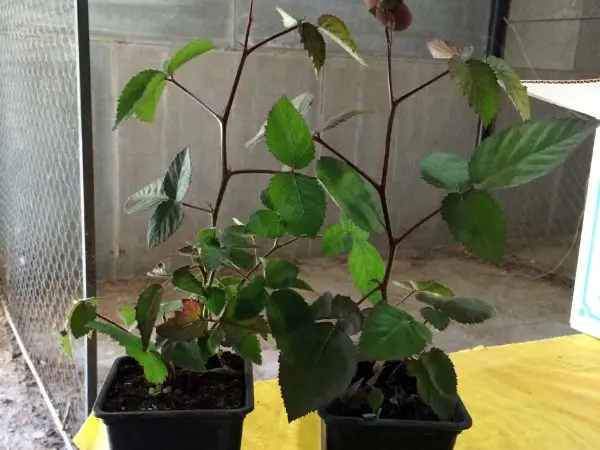
Seedlings for planting should be carefully examined, choose completely intact, without damage.
It is advisable to prepare poor soil in advance – clear the site, remove all plant debris, including roots, dig it on a shovel bayonet, add humus (up to 10 kg), you can add superphosphate and potassium sulfate. If the soil is fertile enough, then it is better to plant a bush in it, and leave top dressing for the second year of growth, otherwise the young plant will rush to grow and may even bloom in the first year, which will greatly weaken it.
A hole is dug with a width and depth of at least 40 cm. If there are several bushes, it is better to leave between one and a half to two and a half meters between them. In industrial cultivation, blackberries are planted in rows, between which they leave 2 m, and between bushes in a row – 1,5 m. Some gardeners apply fertilizer when planting, mixing them with the ground, and cover the roots with it from above after a layer of earth. Roots should not come into contact with fertilizers to avoid burns.
After planting, they tamp the ground and water it abundantly so that the voids disappear and the roots are in close contact with the soil. The root neck should rise above the ground. Then the ground around the seedling is mulched with peat, compost, hay, and the shoots are cut, leaving no more than four healthy, fully formed buds.
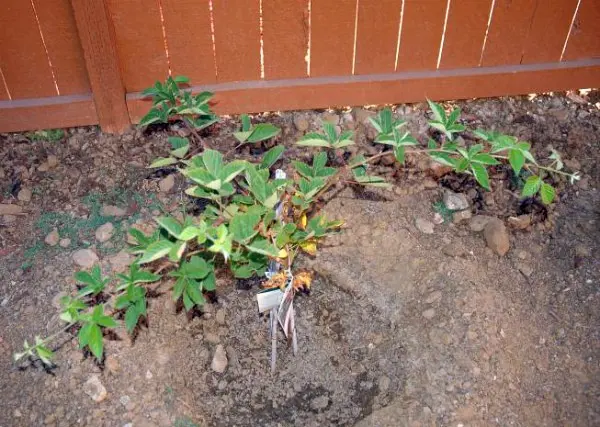
Features of care
Since the blackberry shoots of this variety grow very long, they are usually fixed on trellises – they are tied up or braided at wire levels. Changing the position of the branches is a feature of caring for blackberries.
Growing branches are fixed on supports, and for the convenience of further care, non-fruitful shoots are directed in the other direction, they are fixed separately so that they do not interfere with harvesting later. And in the fall, after harvesting, in preparation for winter, the branches from which they harvested are completely removed. It’s better to burn them. New shoots are shortened by a quarter of their length, tied in bunches and carefully tilted towards the ground so that they can completely hide under the snow.
The main care for Black Satin bushes is watering, loosening, fertilizing, pruning, weed control, pests and diseases. Weeds must be removed constantly, it is desirable to loosen the ground to a depth of 7 cm more often, especially around young bushes. It is necessary to water so that the roots are saturated with moisture, especially during the ripening of the berries of this variety, but water stagnation should not be allowed. Feeding is usually advised every couple of years with a solution of slurry (dilute with four parts of water) or bird droppings (dilute with ten parts of water).
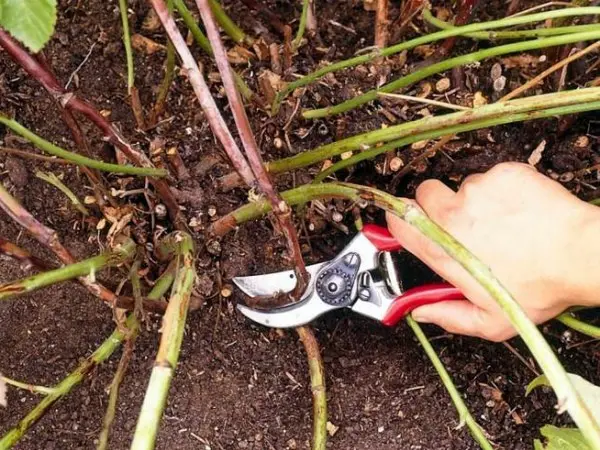
Berries should be harvested as they ripen, ripe berries should not be allowed to remain on the branches, this can provoke the development of rot. For the prevention of diseases, experts advise the plant to sometimes be sprayed with infusion of horsetail.
Before winter, especially if it may turn out to be little snowy, shoots cut off and tied with buds can be covered with straw, leaves or coniferous branches to protect them from frost. Sometimes a non-woven fabric is used – you need to be careful not to deprive the plant of air movement so that it does not dry out in the heat.
Blackberries are propagated by cuttings or by dividing the bush. Most often, another flexible shoot is added dropwise, it takes root, then it is cut off from the mother plant, transplanted to the right place.
Video “Overview of the blackberry variety Black Satin”
This video will introduce you to the Black Satin blackberry variety, as well as the features of caring for it.









